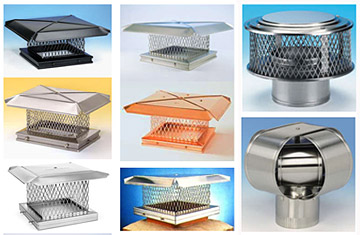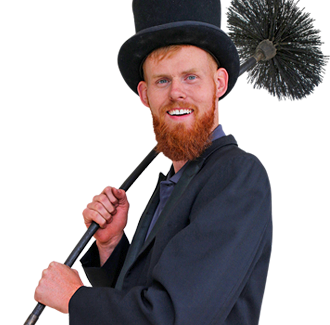Chimney Cap Fundamentals
 Chimney caps are categorized as accessories but provide such great benefits that no chimney should be without one. There are also a few problems that can arise with the operation of your fireplace or wood stove as a direct result of issues with the chimney cap. With proper maintenance, however, chimney caps have no down sides and are absolutely must-have accessories.
Chimney caps are categorized as accessories but provide such great benefits that no chimney should be without one. There are also a few problems that can arise with the operation of your fireplace or wood stove as a direct result of issues with the chimney cap. With proper maintenance, however, chimney caps have no down sides and are absolutely must-have accessories.
There are many different kinds of chimney caps, but they all serve the important function of covering the opening at the top of chimneys. It’s best to choose a chimney cap that has wire mesh, although it is important to watch for signs of clogging. The following are some of the benefits and potential problems with chimney caps:
- While it’s obvious that a chimney cap is like an umbrella or roof over your chimney that can keep water out, what is not so obvious is that many costly problems are prevented because of this benefit. The biggest enemy to any chimney is moisture. Without a chimney cap, water can pour into your chimney and get inside the house or attic. The moisture can also damage ceilings and walls.
- When mesh netting is part of the chimney cap, problems caused by animals entering the chimney are prevented. It is not unusual for various animals to be drawn to the warmth of a chimney. When snakes, squirrels, raccoons, birds, and other creatures get into the chimney flue, they often have difficulty getting back out. The animals can get stuck and die, which causes a horrible stench. It can be tricky dealing with wild animals, partly because there is the possibility that they are carrying a disease such as rabies, which is deadly and can be passed on to humans. Our chimney professionals have experience dealing with animals in chimneys, and we recommend that you give us a call if this problem arises.
- There is a bird called a “chimney swift” which is protected by federal law. These birds seek out chimneys as they migrate through the Northeast. Once they make a home in a chimney, they must be left there until after nests are built, babies are hatched, and migration continues in spring. The problems homeowners have to deal with because of chimney sweeps include bird droppings, noise, and a clogged chimney.
- Chimney caps prevent downdrafts of cold air from blasting down the chimney. By preventing the frigid air from entering your home, the chimney cap also helps cut energy costs.
- Chimney caps with wire mesh serve as spark deflectors and prevent hot sparks and floating embers from igniting nearby combustibles, such as rooftops.
- If chimney cap screens are too small, they can easily become clogged with soot or creosote. The obstruction can prevent fires from getting needed oxygen, making the fires hard to light and inefficient once ignited.
There are times when it’s important to check chimney caps, to ensure that they are functioning properly, including the following:
-

The Chimney Cap can become encased with ice or snow, not allowing the chimney system to function properly.
After there have been high winds, check the chimney cap to be sure it isn’t clogged by leaves or other kinds of debris.
- Paper should not be burned in the fireplace, as a rule, but if it is, the ash and bits of paper could easily become trapped in the chimney cap mesh.
- Ice and snow can build up around the chimney cap in heavy winter storms, which can prevent proper circulation of air in the chimney.
Our professional chimney technicians always check the chimney cap in an inspection, something that is recommended even for infrequently used fireplaces.








